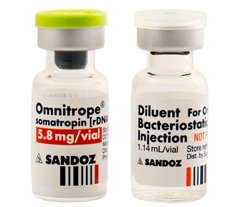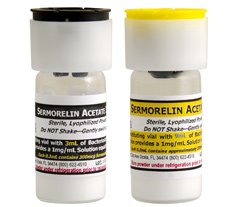Testosterone Levels in Women

Maintaining proper testosterone levels in women is just as important as it is for men. Testosterone protects bones from weakening and fractures, it keeps the brain sharp, lowers cholesterol, protects muscular structure, aids in metabolism of food to prevent weight gain, enhances libido and sexual arousal, and a host of other crucial bodily functions.
Comparing testosterone levels in females vs. males is never recommended because men clearly produce and require a much higher level of testosterone in their bodies than women. For that reason, there is an entirely different set of guidelines for what is considered to be normal free and total testosterone levels in the body of a female. This will also differ based on age and even menopause.
One of the most important things to consider is the fact that women’s bodies are more sensitive to testosterone decline than men’s due to the lower amount available for use. Symptoms of Low T tend to be noticed sooner whereas a man might take a number of years to realize that there is a problem.
What Are the Average Testosterone Levels for Women?
One of the most confusing things for patients and doctors alike is the fact that there is no general consensus on what constitutes a normal testosterone level. Different sources will have different averages for testosterone levels in women. That is why doctors use symptoms along with blood test results to help make the determination of who can benefit from testosterone therapy.
Here are the various total testosterone levels in females that have been reported as average:
- The National Institutes of Health : 30 – 95 ng/dL
- Quest: 2 -45 ng/dl (age 18 to 69, nothing listed after that)
- LabCorp: 8 – 48 ng/dL (age 20 – 49), 3 – 41 ng/dL (over age 49)
- Other sites recommend 15 – 70 ng/dL
To complicate matters even further, one lab even states differences based on premenopausal women at 10 – 55 ng/dL and postmenopausal women at 7 – 40 ng/dL.
The average free testosterone levels are as follows:
- Quest: 0.1 – 6.4 (age 18 – 69), 0.2 – 3.7 (age 70 – 89)
- LabCorp: 0.0 – 9.5 ng/dL
Free testosterone is that which is not bound up and is available for use by the body’s tissues. The wide range of testosterone averages above is the reason why women should contact a hormone replacement specialist to address the issue of Low T and its treatment.
Testosterone Levels by Age Chart
Here are some important facts to know about testosterone levels in females by age:
- The level of bioavailable testosterone in a woman between age 20 and 50 who is not on oral estrogen should be 0.8 – 10 ng/dL
- A woman of that age group who is on oral estrogen should have testosterone levels between 0.8 – 4.0 ng/dL
Boston University School of Medicine reported in 2002 that women under age 50 should be considered to have low testosterone if their total plasma testosterone level was less than 25 ng/dL. A woman over the age of 50 was ruled testosterone deficient under 20 ng/dL.
What to Do to Improve Testosterone Levels
When doctors diagnose low testosterone levels in females, treatment with a bioidentical testosterone cream made to their particular dosage requirements is what will be prescribed. If a woman’s levels are not low enough to warrant treatment, then other avenues of improving testosterone supplies will be addressed.
Because testosterone has such a wide range that is considered in the normal zone, hormone replacement specialists typically consider a woman with symptoms who is in the lower end of the normal range to be testosterone deficient. This will allow for testosterone treatment to be prescribed.
In order to avoid the symptoms of Low T, it is recommended that women in their thirties and forties concentrate on getting 7 to 9 hours of quality sleep each night. This helps maintain proper testosterone levels. Do not avoid healthy foods that contain cholesterol, such as eggs. Cholesterol is crucial for the production of testosterone in the body.
Other ways to improve testosterone levels in women include:
- Engage in weight-bearing and high-intensity exercise
- Eat a balanced diet and eliminate or greatly reduce sugar intake
- Avoid stress
- Check vitamin D and B 6 levels for deficiency – if so, use supplements
- Increase zinc and magnesium intake if these levels are low
- Eat nuts and seeds every day
Contact the hormone replacement therapy specialists at Kingsberg Medical to learn more about what you can do to protect your testosterone levels. Consultations are always free of charge.
Brian Leeber



















